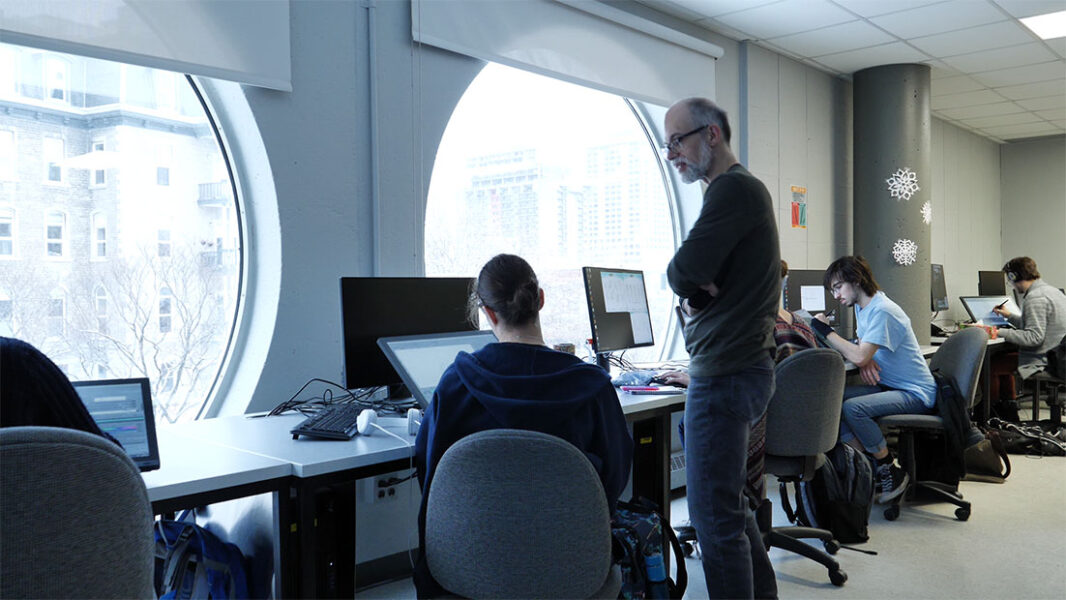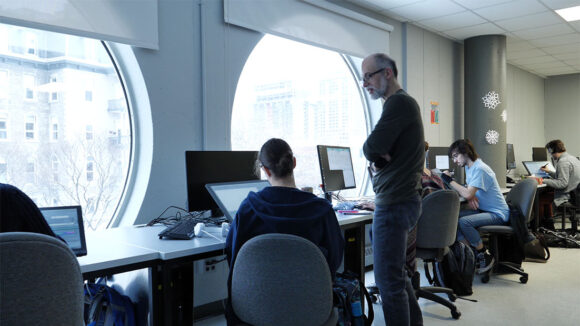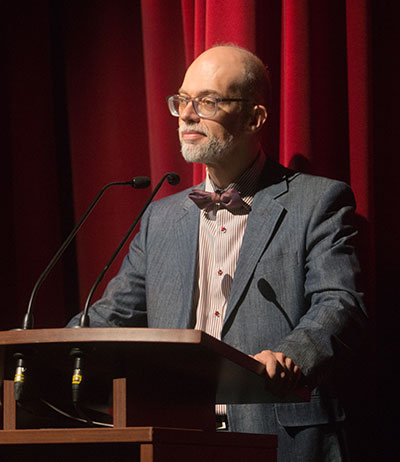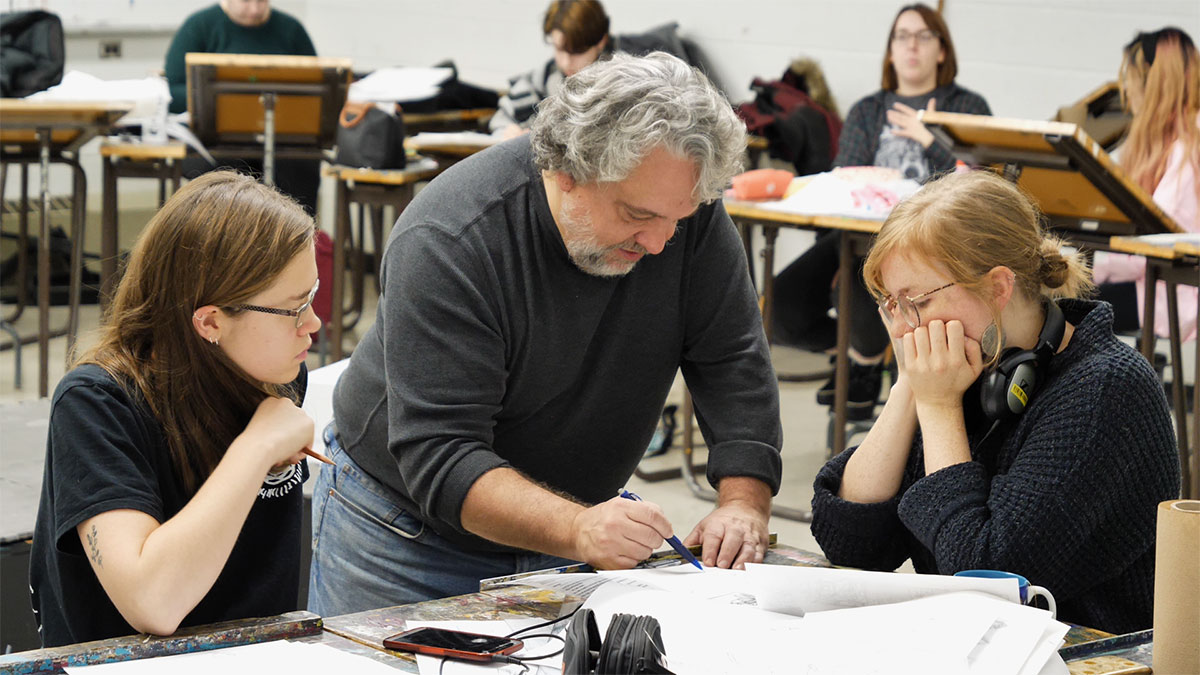

Some Of Canada’s Most Promising Animators Are Coming Out Of Animation Vieux Montréal, A School That Costs $105 A Semester
Located in downtown Montreal, Animation Vieux Montréal (which translates as Old Montreal Animation) is a unique animation department. A part of the school Cégep du Vieux Montréal, it offers three-year programs for hand-drawn and cg animation.
In Quebec, high school covers grades 7–11 (ages 12–17). After graduation, students move onto something called Cégep, a level of schooling situated between high school and university that’s unique to the province. The period of education is either two years, if you’re moving on to a university, or three years, if you’re in search of a technical program (i.e. a job).
Animation Vieux Montreal opened its doors in 1999 and is under the direction of Pierre Grenier. “In the late 1980s and much of the 1990s,” says Grenier, “almost everyone studied in Toronto or other parts of Canada. In Quebec, there was Concordia University but they were not geared towards the industry. Beyond that, people learned on the fly by getting a job at a studio and working their way up the ranks. So representatives from the animation industry approached the Quebec government, and after some consultation, it was decided that an animation program [at Cégep level] was sorely needed.”

Grenier was hired to construct the department and start the program at Cégep de Vieux Montreal. “I was the first teacher, and it grew and grew. It started as a one-year [2d animation] program for adults because the industry was eager to hire people. Then it switched to a three-year program. The 3d program started in 2003. Initially the first year was the same for the two programs, but nowadays the quantity of things they have to learn is so huge that we couldn’t just get away with only two years of specialization. So now they are completely different three-year programs.”
Structuring the program
The department admits 90 students annually, 45 in each stream, with around 240 students in the program at any given time. The courses are geared toward French speakers. The typical student age is 17, although there are also some adults — who have changed careers — in the program. Because the candidates tend to be young, they are not asked to show a portfolio. Instead, they must take an admission test which lasts 3–4 hours.
“We look at their grades,” says Grenier. “Only the highest will be invited. We have a couple of drawing tests. We see if they understand depth and perspective. So we’re looking for drawing skills but also potential. In 3d, they have a brief tutorial before so they know the basic tools, and then they are asked to model a simple object and do a few operations in the software. That’s enough for us to know if they grasp the basics.”
Perhaps the most alluring part of the program — for Québécois residents only — is the cost. Because Cégep is a public school, the tuition is about US$105 ($140 Canadian) per semester including student fees. And since most work is done on a tablet, material costs are often limited to purchasing a stylus.
There are approximately 15 teachers in the department, including Luc Chamberland (Seth’s Dominion), Lina Gagnon (Frédéric Back’s assistant animator on The Man Who Planted Trees), and Catherine Arcand, a one-time director of the National Film Board of Canada (NFB).
“We have a fairly wide background,” says Grenier. “And sometimes we have lecturers who come in to give a fresh view of things. There’s also an animation history class and one for art history as well. This is given at the same time as the character and background classes. So they use all the information they get in their history classes to research their projects.”
Animation history, in many schools, is frequently lacking among students these days. I’ve encountered students who had no idea who Norman McLaren was or what the NFB is. Grenier was surprised that some of his students had never seen a Bugs Bunny film before: “They don’t know Tex Avery or Chuck Jones. Most of them are influenced by manga and anime, and that’s all they want to do when they come in. Some go further and will develop their own style. A lot will stay in the cartoon look. Some have gone to Gobelins [in France] or to Concordia, but mostly they go and get a job.”
Making a film
After a year of foundation and a second year focusing on conception, creating characters and landscapes, the third year requires each student to make a 30-second film. “In the past we had longer films,” says Grenier, “but the students were so exhausted by the end. We told them 30 seconds is enough to show people what you’re good at. If you want to do characters, they make a film with lots of characters. If you want to do backgrounds, then do great backgrounds. But choose what you really want to show in your film. I think this has worked okay.”
Collaboration between students, and even with other schools and departments, is strongly encouraged. “We really look for synergy,” says Grenier. “Every class should have a relationship with another class in the same semester so that they can understand the importance of each stage in creating animation.”

For soundtracks, musicians from other schools in Montreal — and one in France — score all the films. If sound design is required, the students often turn to their fellow students from the audiovisual department. “Often,” adds Grenier, “we just get along with music only, if they are films geared towards emotions rather than action.”
Entering the industry
Given that the primary aim of the department is to get the students ready for employment, it’s no surprise that the Montreal animation industry has some interest in the program. On the whole there is a good relationship between the department and studios.
At the end of each year, the students present their works during a gala screening. Many studios attend and offer bursaries to their favorite films. “We have about ten companies giving prizes,” says Grenier. “After the screening, the students show their portfolios. I’d say that a third get a job within a month. Another third take maybe about six months. The industry is hungry for talent but they want the best. I’d say our placement rate is about 80% per graduating group. Our biggest employment is Oasis for hand-drawn, but Tonic DNA has also employed a lot of our students.”
Grenier frequently beams about the fact that they are the only Cégep department offering hand-drawn animation. “You don’t stop offering a program because there are not that many jobs. If we took that approach, there wouldn’t be any theater programs. It’s an art.”
He is also refreshingly liberal in his views of the age-old rivalry between artistic and commercial animation: “It’s still the same medium. It’s just what you decide to do with it. They can use the skills they have here for other things. We have some graduates who go into illustration, in cartooning, in painting. As long as you have the basics and learn the tools, what you make with it doesn’t matter.”
